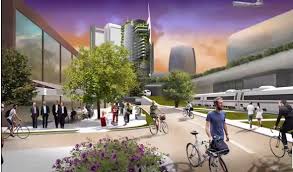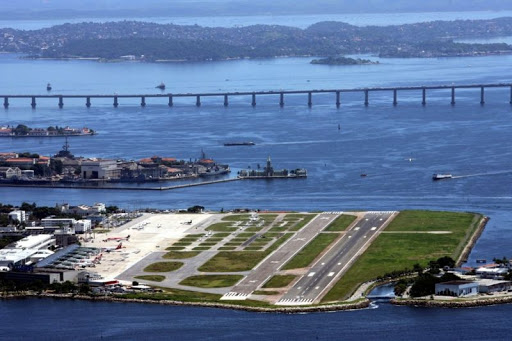RIO DE JANEIRO, BRAZIL – Architects and planners Carlos Murdoch and Felipe Salles have conceived a new Santos Dumont neighborhood, where the airport with the same name is located today. The project involves building and development of the area located between downtown and the South Zone of the city of Rio de Janeiro.
Among the main reasons to pursue this concept are the dominance, proximity and unused capacity of Rio’s Galeão (GIG) airport, which since 1947 has hosted all international traffic to Rio de Janeiro. Added to this are the obstacles to takeoffs and landings that Santos Dumont (SDU) faces at both ends of its runways – the Rio-Niterói Bridge and Sugar Loaf , not to mention the environmental and noise pollution affecting residents of neighborhoods in the SDU flight path, such as Glória, Botafogo, Urca, Santa Teresa and downtown Niterói, as well as the risk of accidents in a densely populated area.

The Santos Dumont neighborhood would be the size of Leblon. It would cover five million square meters, three million of which would be used for residential construction and two million for services and trade. The real estate operation would cost R$100 billion. According to the developer of the concept, the yearly tax revenue would amount to R$3.3 billion.
“This region is in a privileged location the size of Leblon, right in downtown Rio. The latest large-scale developments based on urban horizontal expansion have no longer achieved the expected success. Several factors contribute to this. From the type of apartments, which today should be smaller in area and therefore more affordable, to the issue of urban mobility and time lost in travel. We are heading towards the age of compact cities, of a return to the neighborhood, of cohabitation, of sharing and cooperation. Compact and intelligent cities will be the future trend. Compact for saving resources in terms of services, displacement and infrastructure. Intelligent, because through technology they will behave like a living being, reacting in real time to the perceived impulses. This way, we can understand that growth should be directed to the Center, rather than to the periphery,” say the designers.
According to them, 20,000 direct jobs would be generated during the construction. The project further provides for the implementation of the 2A subway line, which would connect Estácio to Ilha do Governador, home to Galeão international airport.
“In addition, there would be more than 60,000 indirect jobs, which could influence the income of approximately 300,000 inhabitants. The value of the real estate operation varies from R$75 to 100 billion. Once implemented, the neighborhood has the potential to generate approximately 30 percent of Rio’s budget deficit at the moment,” Carlos and Felipe highlight.
For the architects, the execution of the subway line should be a priority, since the SDU airport should only be “disconnected” after its completion. Due to a fortunate synchrony, the airport is located on the best route for an extension of the Subway across the bay to Niterói and, later, to São Gonçalo. Symbolically speaking, the airport is in the geometric center of the Rio de Janeiro metropolis.

“Some cities have done this. The airports have always looked for areas outside cities, but the cities have grown. In Brazil, we have Pampulha (Belo Horizonte) and Congonhas (São Paulo) as examples. In other countries, for instance, the Berlin Airport in Germany, which was important in the Nazi era, is now a large park. Santos Dumont is small, but it offers an option for logistics, there is surplus capacity (at Galeão). I think it is unlikely that this pressure will occur. However, supposing Santos Dumont were shut down it would be interesting to have a population settlement in the region. That’s what we always say about people coming to downtown Rio. There are still many regions to occupy in Porto Maravilha. Many areas to be used in the city. But it is essential that we imagine the cities. The city is what we imagine, plan and accomplish. It’s very important to imagine the city,” said architect and planner Washington Fajardo.
According to the project designers, the creation of this new neighborhood is an opportunity to rewrite the history of the future. Real estate operations can be conceived that link the development and occupation of the Port Zone to the right to build in the airport area. An occupation plan can be drawn up that generates housing and work opportunities for young people from different social classes, a university cluster and a technological hub. Above all, boldly, to restore hope and self-esteem to Rio de Janeiro residents.
Source: diariodorio

